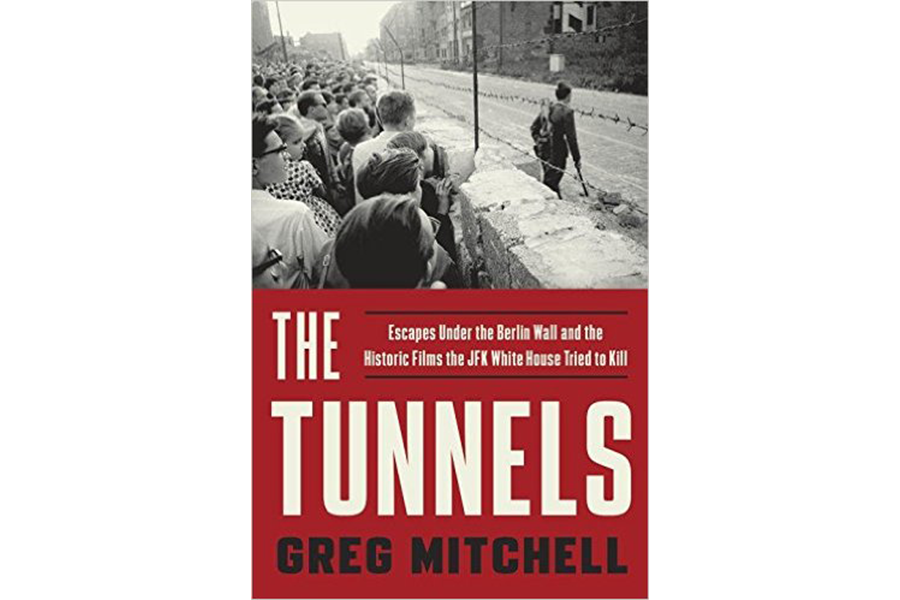'The Tunnels': how brave Berliners tried to dig a path to freedom
As soon as East German troops divided Berlin with a wall of barbed wire and concrete in August of 1961, residents of East Berlin began searching for ways to escape. They hid in the trunks of cars, forged work permits and identification papers, and scrambled over the wall in areas of low security. While every escape attempt involved significant risks, some were more dangerous than others. After tossing a mattress over the wall from her third-floor apartment in the East, one woman tried to leap to a safe landing in West Berlin. She missed the mattress and died of her injuries.
A young couple managed to flee the East by swimming across the Spree River, pushing their three-year-old daughter in a tub before them. Others were not so lucky. One man bled to death just 15 feet inside East Berlin after he was shot trying to sneak across the border in the dark. The East German guards trained their guns on West Berlin and British police to prevent them from assisting the victim.
Perhaps the most difficult method of escape was to dig a tunnel connecting East and West. Teams of diggers typically worked in secret for months to construct sufficiently broad and deep passageways to accommodate refugees. At constant risk of structural collapse, discovery, and sabotage, these tunnelers made extraordinary efforts to rescue friends, family, and strangers from the East. In his fascinating and deeply researched new book, The Tunnels: Escapes under the Berlin Wall and the Historic Films the JFK White House Tried to Kill, Greg Mitchell explores the dramatic mix of physical danger, political brinksmanship, and media maneuvering surrounding several ambitious tunneling operations in the early 1960s.
Constant shortages and a repressive, propaganda-fueled government made existence in East Berlin thoroughly grim. A mordant joke during the decades of Communist rule captures the harsh conditions: “Did you know that Adam and Eve were actually East Germans? They had no clothes, they had to share an apple, and they were led to believe they lived in a paradise.”
Many East Germans were eager to flee such a paradise, particularly if their family already lived in the West. As border security at the wall tightened, underground escapes became more appealing. Tunnelers typically began their work by locating a building in the West that met several criteria: proximity to the wall, sympathetic owners, and enough space to conceal huge piles of dirt. The breakthrough points in the East were often a matter of guesswork. While the tunnelers would aim to surface in the safety of a known house or building, they could never be entirely sure that they would emerge in the intended spot. And even if they did, they sometimes broke above ground only to confront the muzzles of Stasi guns.
Mitchell’s history is based on a rich set of records, documents, and interviews. Some of the participants are still alive, and much other fantastic source material has been preserved. He can reconstruct entire conversations, follow the efforts of Stasi informants to penetrate the networks of tunnelers, and depict the tangibles of their difficult work in great detail, right down to the aching muscles, hard soil, water leaks, and claustrophobia of the subterranean labor.
This would be more than enough for a compelling history, but the book also contains a second storyline of equal interest. Like most of the American media, NBC and CBS wanted to find compelling footage and narratives from a newly partitioned Berlin. Both networks competed fiercely for scoops, and the prospect of filming an escape-by-tunnel proved irresistible. To secure the rights to film, however, the networks not only paid the tunnelers, they actively assisted them at points.
This level of involvement posed questions of journalistic ethics, but it also risked provoking diplomatic and even military conflict at the height of the Cold War. The appearance of American complicity in assisting escape attempts would likely provoke some Soviet reaction. With tensions already high over the possible deployment of Soviet missiles to Cuba, JFK and his top advisers were anxious to preserve a semblance of neutrality in Berlin. They made this position clear to top executives at both networks, resulting in a different sort of showdown between government officials and media executives.
Mitchell’s book provides a welcome reminder of the ingenuity and courage that people can display when politics and walls separate them from loved ones and a better life. But it’s also a testament to just how forcefully even ostensibly liberal administrations can suppress the media. What a White House led by a more dictatorial nature might do is frightening to imagine.







